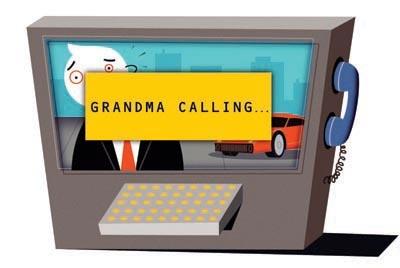The Connected House: Dialing for HDTV

In 1964, AT&T introduced the Picturephone at the New York World's Fair. Forty-one years later, the phone companies are finally bringing out a product that combines voice and video. And they're calling it ... television.
Within the next few months, millions of Americans will be able to get cable channels from the successors to the company that brought us the pink Princess phone. This won't be the same old cable service you get today, but one that the phone companies hope to fill with enough bells and whistles to make TV the centerpiece of your connected home. And the companies say they can do a better job than the often-reviled local cable operators. They'd better be right, because they need a new business. With a call to France now costing less than a piece of bubble gum, they have to figure out a new way to make money before they become as relevant as a vinyl record.
SBC - which has acquired AT&T and will adopt its name - and Verizon are laying thousands of miles of fiber-optic cable to offer high-speed Internet, hundreds of TV channels, and video on demand. They call it a "triple play" - voice, data, and TV all from one company, and all charged on one bill.
SBC wants to tie all its technologies together. For instance, its U-Verse service will let a subscriber see caller ID information on his TV screen. Only those on an accepted caller list are shown; others are shuttled off to voice mail. If the subscriber wants to take the call, he can pause the show using the company-supplied DVR, or he can transfer the show to a TV in another room and later on pick up where he left off.
Because everything is sent via the Internet, everything can appear anywhere at any time. Take a picture with your camera phone (from SBC's Cingular service, of course), store the image on the Internet, and then download it to your TV. Use your cellphone to remotely program your home recording. Watch TV on your cell. Move pictures, movies, and music from PC to TV. Or surf the Web on your plasma screen.
Verizon isn't impressed with SBC's parlor tricks. The rival Baby Bell, which launched its FiOS TV service in Keller, Texas, this past September, said it could offer the same things SBC does but thinks subscribers aren't that excited about them. "We want services that enhance the viewing experience without hyping it up," a Verizon executive said.
One enhancement: HDTV. FiOS customers can already get 17 high-def channels, including local and basic cable feeds, for an additional $9.95 (pay TV channels in HD are extra). And because of the giant-sized bandwidth systems, customers with multiple HDTVs can watch a different high-def channel on each set. SBC's U-Verse customers, on the other hand, will have to live with receiving just one HD feed at a time.
All this is great news for HDTV enthusiasts, because cable and satellite are fighting back. Early in 2006, DirecTV will launch its Home Media Center, an HD-compatible server that moves TV, pictures, and music around the house just like U-Verse promises to do. Whether you buy TV programming from your phone company or elsewhere, the options are getting better every day.




























































